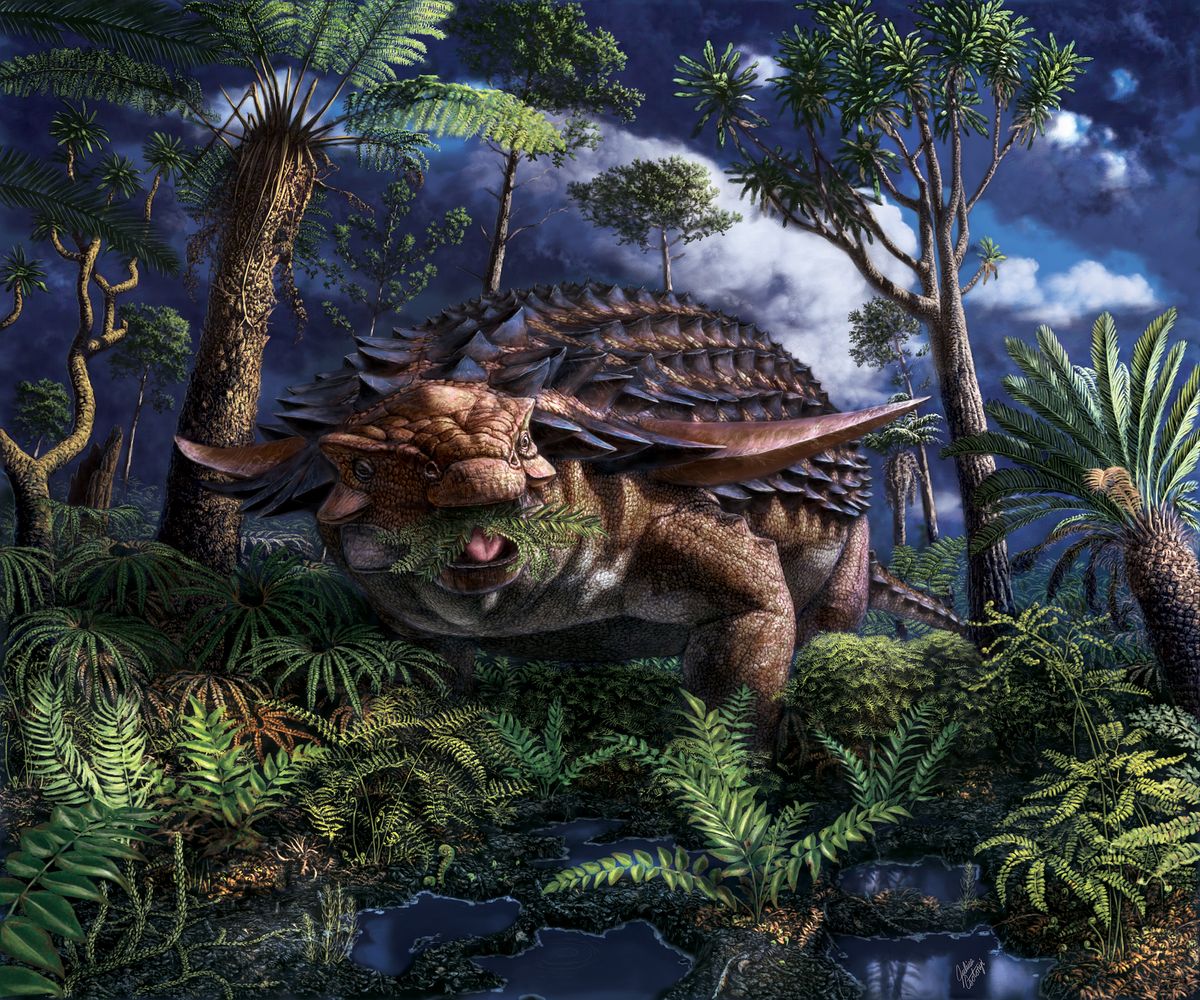
An analysis of its fossilized soccer-ball-size stomach contents reveals that this dinosaur, known as Borealopelta markmitchelli, was an extremely picky eater.
It ate ferns, but only certain types, and only select parts of those plants.
You can see the cellular detail of the plants," study co-lead researcher Caleb Brown, a curator at the Royal Tyrrell Museum of Palaeontology in Alberta, Canada, told Live Science.
With only its tail and hind legs missing, the herbivorous beast is the most well-preserved armored dinosaur on record. .
While it's more common to find the stomach remains of carnivorous dinosaurs (after all, the prey's bones are often fossilized within the beast that ate it), it's rare to find the fossilized remains of a herbivorous dinosaur's last meal.
Furthermore, it can be difficult to determine if fossilized plants were part of the dinosaur's diet or simply at the spot where it died, he added. .
There are only about 10 reported cases of herbivorous dinosaurs' last meals, and "I'd say in two-thirds of those, there's really no good evidence that they are stomach content," Brown said.
As a result, it's hard to know which species of plants, and what parts of those plants, that herbivorous dinosaurs ate.
markmitchelli; this dinosaur not only had good preservation but also was fossilized out at sea, away from land plants.
To study the nodosaur's last meal, researchers made slides out of a few ping pong-ball-size chunks of the fossilized stomach content.
"We recognized at least five different kinds of ferns from the microscopic sporangia [the place where spores form] in the stomach contents, but there were many more that we identified from spores dispersed in the stomach," study co-lead researcher David Greenwood, a professor of biology at Brandon University in Manitoba, Canada, told Live Science in an email!
markmitchelli didn't seem to favor eusporangiate ferns, which lack this ring, even though the ferns were common in the dinosaur's stomping grounds, according to fossilized evidence. .
Just like a modern deer, "it selected which plant parts and which plants it ate," Greenwood said.
"We have to avoid assuming that the gut contents are representative of the dinosaur's everyday diet."
The stomach contents also revealed the season of death